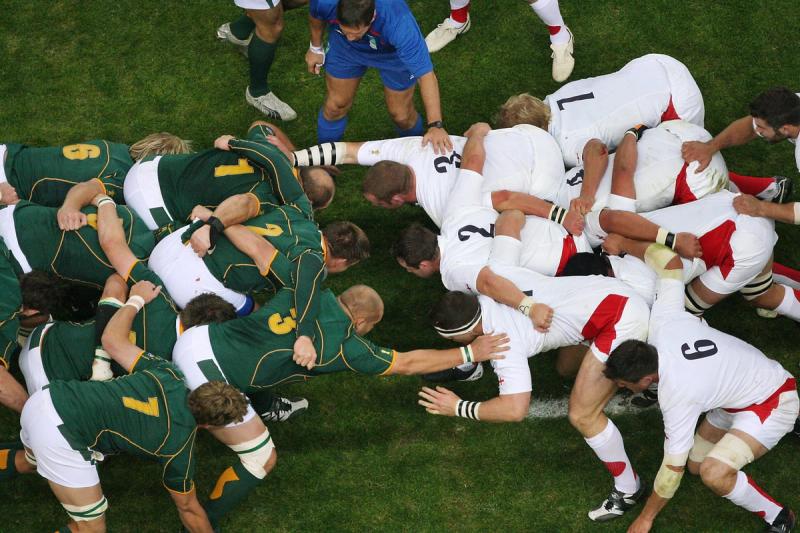Introduction
Rugby, with its combination of physicality, teamwork, and strategy, is a dynamic sport where the ultimate objective is to score tries. A "try" is the primary method of scoring in rugby, and understanding how it's done is essential for both players and enthusiasts. In this comprehensive guide, we'll break down the steps and strategies for scoring a try in rugby.
The Fundamentals of Scoring
A try is the most valuable way to score in rugby, worth five points. It occurs when a player successfully grounds the ball in the opponent's in-goal area, situated at each end of the field. To score a try, the ball must be touched down with downward pressure, and it must be done in a controlled manner. Unlike some other sports, a player doesn't need to have full control of the ball to score a try; all that's required is downward pressure with a part of their body or the ball itself.
Setting Up the Try-Scoring Opportunity
Scoring a try in rugby involves a combination of strategy, skill, and teamwork. Here are the key steps to setting up a try-scoring opportunity:
1. Gain Territory:
Before attempting to score a try, your team needs to move the ball closer to the opponent's try line. This is often achieved through a combination of running, passing, and kicking. Effective tactics and a strong offensive strategy are crucial in gaining ground.
2. Break the Defensive Line:
To create try-scoring opportunities, players must break through the opponent's defensive line. This can be achieved through quick ball movement, well-timed passes, and well-executed plays. Players should look for gaps or weaknesses in the defensive line to exploit.
3. Support and Continuity:
Once a break is made, it's essential for supporting players to be in place to receive offloads or maintain possession. Continuity is crucial in rugby, as it allows the attacking team to maintain pressure on the defense.
4. Effective Passing:
Accurate and timely passing is a fundamental aspect of creating try-scoring opportunities. Players should be able to distribute the ball quickly and accurately to exploit gaps in the defense.
5. Exploiting Overlaps:
Recognizing and exploiting overlaps is a key skill in rugby. When the attacking team has more players on one side of the field than the defending team, there's an opportunity to pass the ball quickly and create a break.
6. Effective Kicking:
Strategic kicks can be used to gain territory and put pressure on the opponent's defense. Kicking can also create opportunities to regather the ball and score tries.
7. Rucks and Mauls:
Rucks and mauls are phases of play where players contest for possession on the ground. They provide opportunities for the attacking team to retain possession and continue their attack.
Executing the Try
Once the attacking team has successfully breached the opponent's defensive line and gained ground, it's time to execute the try. Here's how it's done:
1. Running With the Ball:
The ball carrier, typically a member of the attacking team's backline or forwards, must advance toward the opponent's try line. They must evade defenders and aim to reach the in-goal area.
2. Grounding the Ball:
To score a try, the ball must be grounded with downward pressure over the try line or on the try line. The player can use any part of their body, including their hands, to achieve this. It's essential to maintain control of the ball while grounding it.
3. The Referee's Decision:
The decision regarding whether a try is scored is made by the match referee. The referee will consider various factors, including whether the ball was grounded with downward pressure and whether the player was in touch or committed an infringement during the process.
4. Conversion Kick:
After a try is scored, the attacking team has the opportunity to kick for a conversion. This involves a place-kick or drop-kick through the opponent's goalposts. A successful conversion adds two points to the try scorer's team's total.
Common Strategies for Scoring Tries
Scoring tries is both an art and a science in rugby. It involves a combination of skill, strategy, and teamwork. Here are some common strategies used to create try-scoring opportunities:
1. Phase Play:
This involves a series of well-coordinated phases where the attacking team maintains possession through rucks, mauls, and short passes. It's used to slowly advance the ball down the field while looking for gaps in the defense.
2. Line Breaks:
Players with excellent footwork and the ability to read the defense can make line breaks by exploiting gaps or mismatches in the defensive line.
3. Quick Ball Movement:
Fast and accurate ball movement through passes and offloads can catch the defense off guard, creating opportunities for players to break the line.
4. Kicking Game:
Kicking can be a strategic way to gain territory or create confusion in the opponent's defense. Kicks can lead to regather opportunities for the attacking team.
5. Set-Piece Plays:
Set-piece plays, such as lineouts and scrums, can be used to launch coordinated attacks, often involving specific pre-planned moves.
The Importance of Defense
Scoring tries is not just about the attacking team's efforts. Defense plays a significant role in rugby, and a strong defense can prevent the opponent from scoring. Defensive strategies include tackling, counter-rucking, and marking opposing players to disrupt their attacking plays. For attackers, understanding the defensive strategies they may encounter is crucial to devising effective scoring opportunities.
Celebrating a Try
Scoring a try is a moment of great excitement in rugby. Players often celebrate with their teammates, displaying camaraderie and sportsmanship. It's not uncommon to see players leaping into the air, exchanging high-fives, or even performing specific team celebrations. It's a testament to the hard work and teamwork that goes into scoring tries in rugby.
Try-Scoring Records and Memorable Tries
Rugby has a rich history of incredible try-scoring moments, and records have been set by some of the sport's greatest players. For example, Jonah Lomu, a legendary New Zealand winger, is known for his try-scoring prowess. He scored 15 tries in the 1999 Rugby World Cup, a record that still stands.
There are also memorable tries that have become iconic in rugby history, such as Gareth Edwards' try for the Barbarians against New Zealand in 1973. These moments showcase the beauty of the game and the incredible skill of its players.
Conclusion
Scoring a try in rugby is the ultimate goal for any attacking team. It represents the culmination of skill, strategy, teamwork, and determination. Understanding the fundamentals of how to score a try is essential for players and enthusiasts alike. Whether you're watching a thrilling match or stepping onto the field yourself, the pursuit of scoring tries is a fundamental aspect of the beautiful game of rugby. It's a moment of celebration, a testament to hard work, and a demonstration of the sport's rich history and tradition.
Related posts
See all
February 23rd
The Evolution of Rugby Tactics: Top 5 Innovations That Changed the Game
Discover the dynamic evolution of rugby tactics through the top 5 innovations that reshaped the game. From the introduction of set plays to the embrace of data analytics, rugby's strategic landscape has evolved dramatically. These innovations reflect a relentless pursuit of excellence and a commitm...

February 20th
Total Rugby: Embracing the Essence of Dynamic Play
Total Rugby, born from Fred Allen's vision, revolutionized rugby with its fluidity and creativity. Encouraging unstructured play, it empowered players to adapt and express themselves freely on the field. Its legacy extends globally, inspiring teams to embrace versatility and innovation. Total Rugby ...

January 4th
Triple Crown Triumph: Rugby's Prestigious Trophy
The Triple Crown, steeped in rugby lore, transcends sport as a symbol of excellence and national pride. From its origins in the late 19th century to the modern era's dynamic clashes.

November 19th
Evolution of Rugby: From Inception to Modern-day Mastery
Unveil the evolution, triumphs, and challenges that define rugby's unparalleled journey—a testament to the enduring spirit that has shaped it into a worldwide phenomenon.

November 9th
Scrums and Lineouts Demystified: Rugby Basics
Rugby's scrums and lineouts, often seen as intricate components, are pivotal in the sport's dynamics.

November 6th
Rugby Basics: A Step-by-Step Guide to Scoring a Try
Scoring a try in rugby is a thrilling culmination of teamwork, strategy, and skill. It involves grounding the ball with downward pressure in the opponent's in-goal area, worth five points.